Why ‘Razoredge’?
Although many people refer to any of the cars as a ‘Renown,’ the 1946-48 TD series and the 1949 TDA were not actually so named – so we refer to the whole group as ‘Razoredge’.
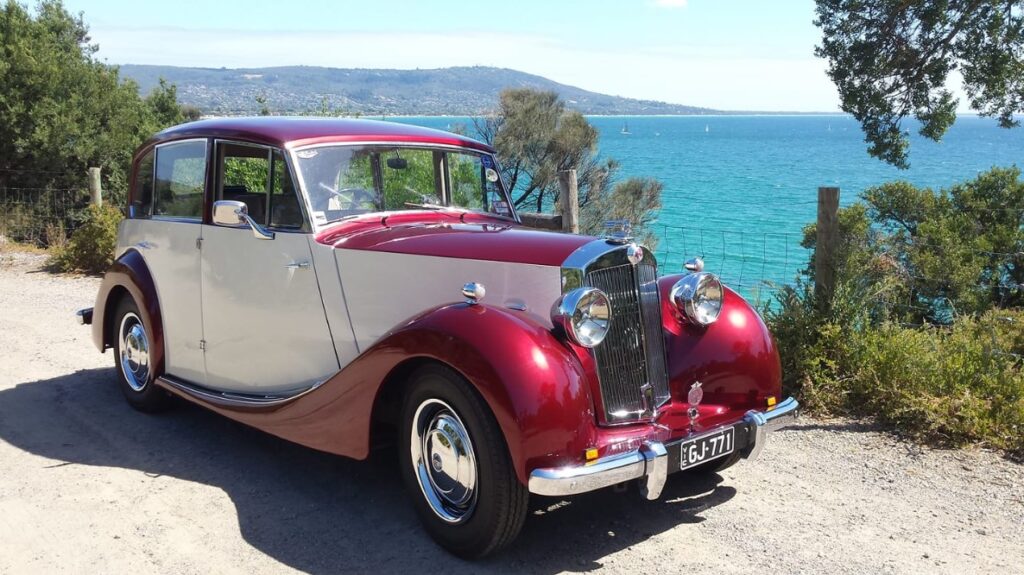
TROC caters for the large Triumph Razoredge saloons – the 1800, 2000 and Renown – produced by Standard Triumph from 1946 to 1954. There are detailed differences between these cars as can be seen later, but the overall appearance is largely similar. Triumph even offered a limousine version of the Renown that was built in small numbers.
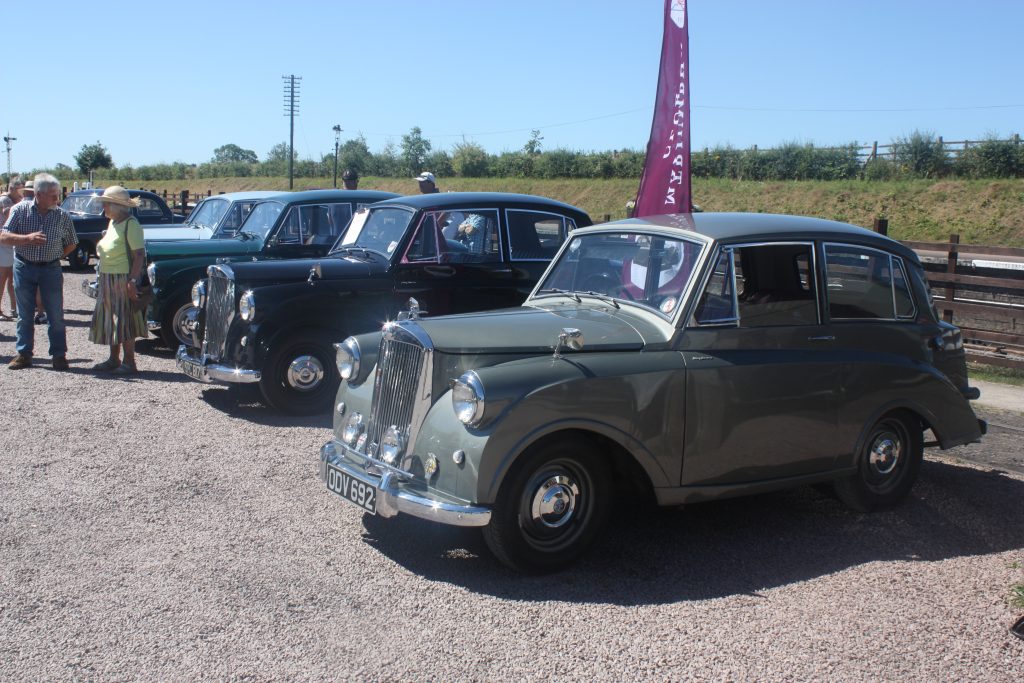
The large Triumph Razoredge cars are often confused with the small Razoredge model from the same stable, the Triumph Mayflower. The Mayflower is catered for by a separate club – the Triumph Mayflower Club.
The bodies on our cars were all coach built by Mulliners of Bordesley Green, Birmingham then fitted to the chassis that was made by Standard Triumph in Coventry. This firm shared its name with other Mulliner coach-building firms (e.g. H J Mulliner and Arthur Mulliner) but with whom there was no financial connection.
There are 5 different versions of Triumph Razoredge within our club, as seen on the Home Page:
The Triumph 1800 Saloon
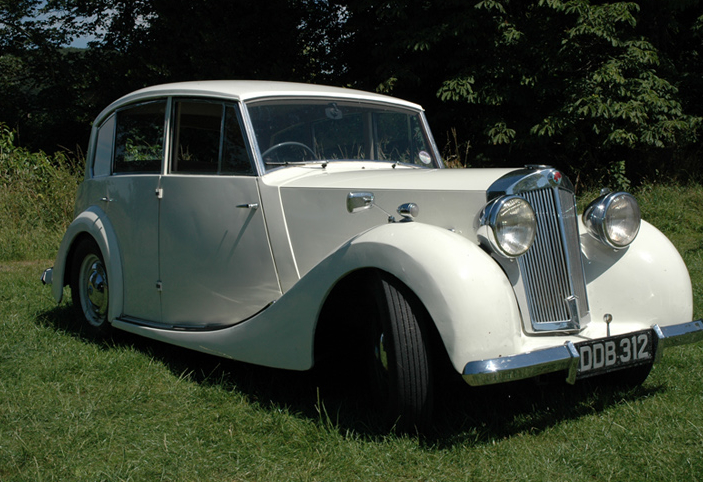
The first Razoredge Triumph car. the 1800 saloon was in production from around February 1946 to February 1949 during which time 3999 production cars were built with commission numbers TD1 – TD3999. The engine was a 1776 four-cylinder unit, an overhead valve version of the Standard 14 engine. This engine was similar to the unit which Standard Triumph were selling to Jaguar Cars for their 1.5 litre saloon.
A Triumph Town and Country Saloon, 1946-1948. TD 2733 DL
The car remained largely unchanged throughout this model’s life and always had a 4-speed column change gearbox, with right hand control. The car was introduced as the 1800 Town & Country Saloon but was more commonly referred to as the Triumph 1800 Saloon.
TD 3847 DL, one of the very last TDs built
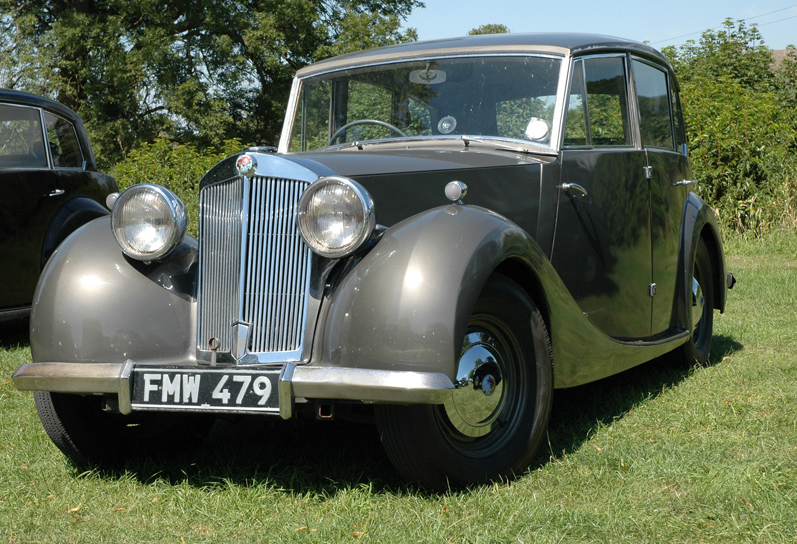
The Triumph 2000 Saloon (TDA)
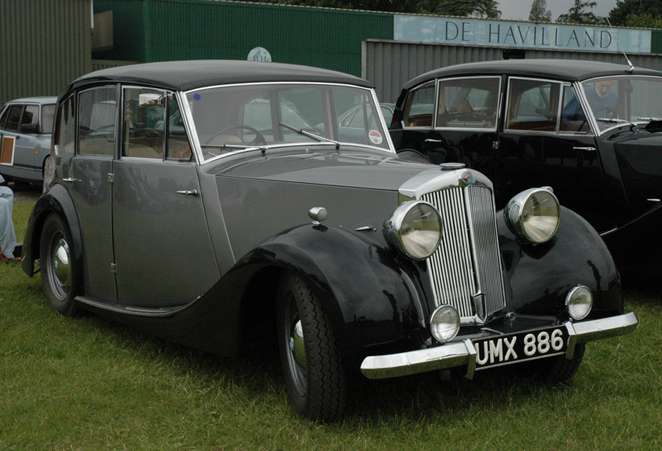
The 2000 saloon was in production from around February 1949 to November 1949 by when, coincidentally, 2000 vehicles of this type had been produced. Appropriately, 2000 Roadsters were also produced and each model was powered by the Vanguard 2088cc engine in place of the 1800cc. Many of the 1800 features were carried over to the 2000 saloon including the dashboard with its distinctive twin centrally mounted circular dials.
TDA 1825 DL
The 2000 saloon also retained the right hand column gear change, the large diameter headlamps, the hub caps and petrol filler cap. The tubular chassis was also used with transverse front springs but now supported the Vanguard engine, gearbox and rear axle.This car was really a halfway development between the 1800 and the Renown, commission numbers were TDA I -TDA 2000. One of the key visual clues to differentiate an 1800 from a 2000 is that the exhaust pipe is on the left (nearside) on the 1800 car but is on the right (offside) for the 2000. The exhaust position is the same for the Renown.
The Triumph Renown Saloon (TDB)
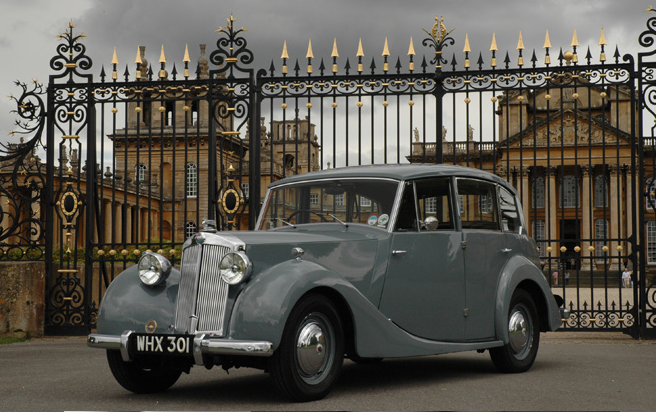
The Renown saloon was in production from around October 1949 to December 1951 with commission numbers TDB 1 – TDB 6501. The Renown name never appeared anywhere on the vehicle but was used in advertising after the launch of the car. The Commission plates also carried over the Triumph 2000 Saloon designation from the TDA, rather than the “Renown” name.
TDB 4609 DL
The bodyshell was very much the same as the 2000 saloon but was now supported by a Vanguard style box section chassis with many common Vanguard parts, including the engine, transmission and the majority of the steering components. The Lockheed braking system from the Vanguard was also used on the Renown and the addition of independent coil spring front suspension completed the changes to the chassis.
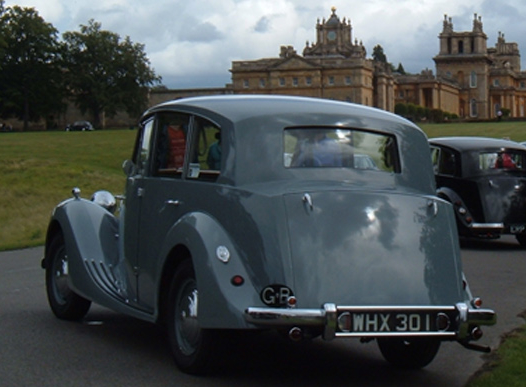
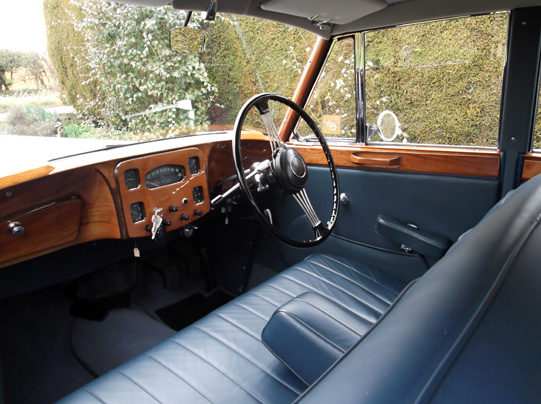
Interior changes included a new dashboard which incorporated the Vanguard rectangular shaped instruments. New seats were featured together with small flap to hinge over the rear view mirror to prevent dazzle form following vehicles’ headlamps at night. The 3 speed gear change was now fitted on the left of the steering column.
New 7inch headlamps were key to the exterior changes that also included hubcaps with an inset Globe badge together with a re-profiled bumper section which was identical to the Triumph Mayflower. New front over-riders were also shared with the Mayflower. Cars prior to TDB 2300 in October 1950 were fitted with a Roadster style plain radiator cap. After this point the Renown sported the now familiar flaming torch radiator cap while the instrumentation and gauges carried green graphics rather than white. From January 1950 overdrive on top gear (3rd) was available as an optional extra, operated mechanically from the gear lever.
The Triumph Renown Saloon (TDC)
The Renown Limousine
The Limousine was 3 inches longer than the Renown saloon (TDB) with the extra length added entirely to the passenger compartment giving the vehicle a 9ft 3inch wheelbase. The rear doors were noticeably wider and the front doors were also slightly enlarged, each included a push button door handle. A division was installed with sliding safety glass between the door pillars and the back rest to the front seat was reduced in thickness. The rear window was also widened at this time. All these features, except the division glass and the ‘Chauffeur quality’ front seat, were to appear on the outwardly identical series II Renown. Production for the Limousine started in August 1951 with TDC 2001 and finished at commission number TDC 2188 LIM in October 1952. However, two sets of 3 further Limousines were commissioned: TDC 2620 LIM, TDC 2621 LIM and TDC 2622 LIM, for export to America through Fergus Fine Motors of New York; and in October 1953 as TDC 2189 LIM, TDC 2190 LIM and TDC 3000 LIM in a commission for British Rail.
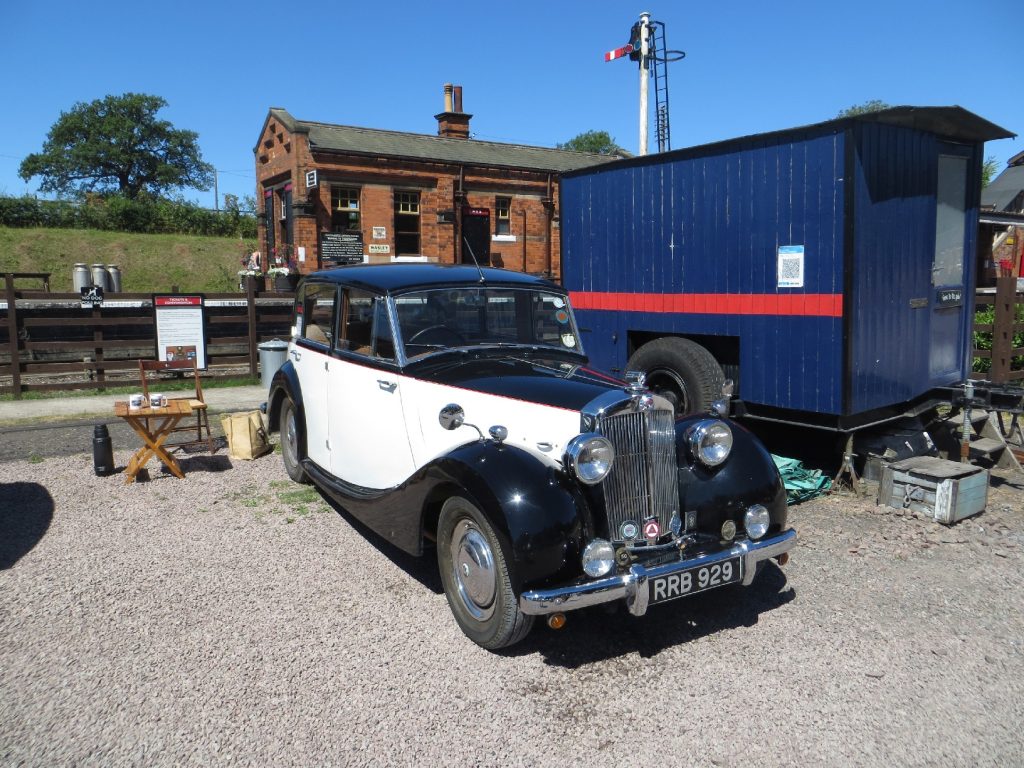
TDC 2126 LIM, seen at the TROC national rally, Quorn and Woodhouse historic railway, in 2022.
The Renown series II
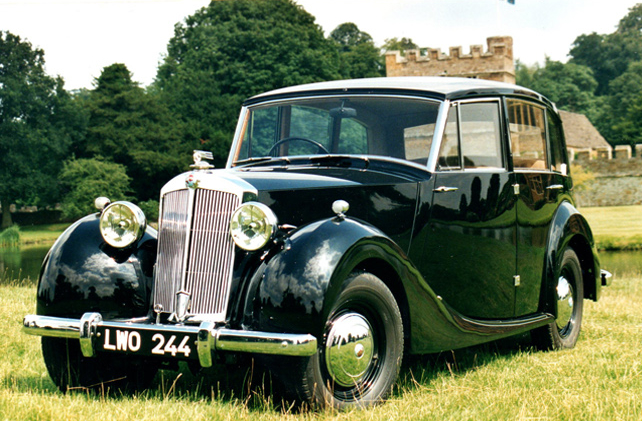
Introduced in late 1951, the Renown series II was produced until 1954 with commission numbers running from TDC 1 -TDC 2000 with a further series TDC 2191 to TDC 2799 built up until October 1954. The TDC Renown has few mechanical differences from the TDB and the majority of parts are common, apart from the doors, wings, exhaust system and propshaft, as necessitated by the longer body.
TDC 1292 DL Photographs by John Bath
The major visual changes to the TDC and the easiest way to identify the series is by the wider rear screen, the push button door handles and the fresh air vent on the bulkhead between the bonnet and the windscreen.
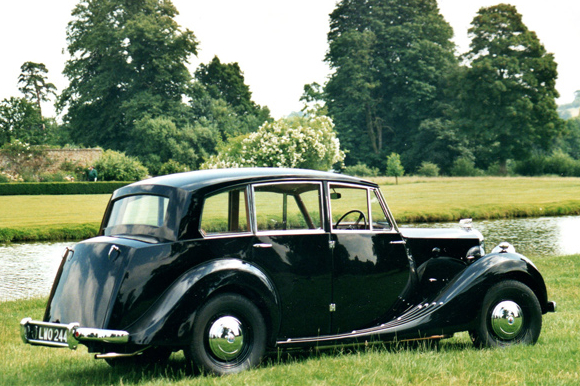
An electrically operated overdrive was available from February 1954 which could be used on both second and top gear.
Technical Developments During the TDB/TDC Years
by John Bath, Club Historian
The Club obtained, early in its history, the official Standard-Triumph records relating to the engineering changes for the TDB and TDC models. These records deal mostly with the mechanical aspects only, not the various bodywork and ‘optional items’ changes. It might be of assistance to owners of TDB and TDC Razoredges to note exactly where their own car comes along this timeline.
| 9/1/50 | Rear jacking bracket below the bumper was closed with a welded plate, instead of being open with a rubber plug – TDB 50 onwards. |
| 24/5/50 | New longer dipstick introduced as from engine TDB 2843E, following complaints that the cars used a lot of oil. (Engines had their own TDB number ending in E, usually close to the Commission Number, but they only matched by coincidence, not by design or intention.) |
| 28/5/50 | New radiator and thermostat introduced as from TDB 2001. |
| 26/9/50 | Non-adjustable outer track-rods introduced from TDB 2663. |
| Sept 50 | Chassis modified to allow an overdrive unit to be fitted. This involved the rear engine mounting redesigned to give more clearance. From TDB3001. |
| Sept 50 | ‘Torch’ radiator cap mascot introduced – the first 3,000 Renowns having had a plain nut, like the 1800 and the TDA models. |
| 2/10/50 | Colour scheme of dashboard instruments changed from green to white (white pointers) on TDB 3454-60 and then TDB 3464 onwards. |
| 27/10/50 | Revised engine manifold system introduced with thermostatically controlled hot-spot. For more details see Workshop Manual. From engine TDB 5094E. |
| Nov 50 | Oil filter changed from Fram to Purolator type, from engine TDB 2725E, fitted to Commission Number TDB 2714. |
| Nov 50 | Oil filler cap changed from brass to aluminium, from engine TDB 3213E. |
| 8/3/51 | By this time, 157 cars had been made fitted with overdrive. |
| 6/9/51 | The cover plate on the steering box now has a fixed button – formerly an adjusting screw with locking nut. (Adjustment now made by thickness of shims.) |
| 26/9/51 | Headlamps from TDB 5966 onwards are painted, not chromed, due to rising cost of chromium plating. |
| 17/1/52 | Brass plate on rocker box cover giving valve clearances replaced by a transfer, from engine TDC 208E. |
| Jan 52 | Dipstick identical to Standard Vanguard, from TDC 713E onwards. |
| 24/3/52 | By this date, 1,192 type ST chassis had been made, of which 192 were fitted with overdrives. |
| 14/2/52 | New exhaust valves fitted as a matter of urgency, with new guides. TDC 1107E onwards. |
| 5/6/52 | Chrome headlamps return – TDC 1619 onwards. |
| 24/6/52 | Reports that radiator top hoses are blowing off. Changes made at the request of production: old part number 100948, new part number 58180, from TDC 994 onwards. |
| 21/11/52 | Clutch operating rods redesigned and ‘to be introduced with a minimum of delay’ from TDC1901 onwards. (We have an early Globe article describing how a member’s clutch rod had sheared. They repaired it themselves in a garage workshop, only afterwards discovering that the man who they thought had given them permission to do so was nothing to do with the garage.) |
| 8/12/52 | Dashboard clock is replaced with an ammeter, TDC 1841 onwards. |
| 1953 | Virtually no changes made during this year. |
| 1/1/54 | Electrically-operated overdrive replaces the mechanically operated system. |
| 5/3/54 | Rear bumper fitted with reflectors, TDC 2352 onwards. |
| 12/8/54 | To comply with new lighting regulations, a new rear number plate box and stop light unit was fitted, TDC 2684 onwards. |
Standard Triumph Paint Details c.1952
By Tom Robinson
During one of those periodic clear outs of paperwork I came across some details concerning paints applied to the cars in the Standard Triumph range around 1952 and I thought members might find the information of interest. Although not dated, the latest vehicle covered appears to be the TR2 and as the TR3 appeared in 1953, I can assume that 1952 is about right.
As far as I am aware, our Razoredge throughout its production was available in the standard colours of Black, Grey, Jade Green and Maroon. We do know that for special orders, Coventry would consider two colour schemes and non-standard colours, but these were extremely rare occurrences.
What is interesting about the document is that in some instances, against the colour specification, the statement ‘all models’ appears. I assume this to be an error by the creator of the document; as far as I am aware, no variation from the four colours I have just stated was readily available for our cars, so the mention of Comet Blue as available is interesting.
| Colour | Range | ST part No. | Docker’s paint ref |
| Elfin green | All models | 552309 | BF 5086 |
| Birch grey | All models | 552316 | BF 5085 |
| Black | Renown | 551701 | BF 4695 |
| Comet blue | Renown | CD 31135 | BF 4868 |
| Cotman Grey lustreen metallic | Renown | CD 31222 | BF 3565 |
| Jade Green lustreen metallic | Renown | CD 31302 | BF 3969 |
| Salvador blue | All models except estate car | 552323 | BF 5083 |
Note that there is no reference to Maroon as a colour available by this date. I wonder if this is correct?
If any members have anything further to add on this subject, I am sure the editor would be pleased to hear from you.
